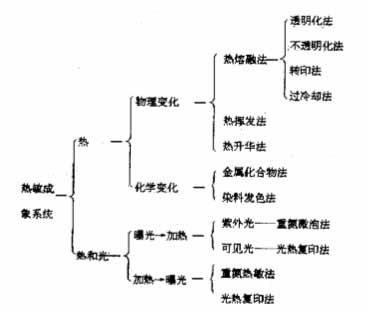The progress of office automation technology and new information delivery methods has accelerated the exchange of information in the information society. The paper for intelligence industry also developed rapidly. The following is a description of the thermal development of dry non-silver (hereafter collectively referred to as thermal) imaging technology, products and market development.
I. Development, system classification and development trend of dry non-silver thermal imaging technology
In the 1930s, wax-type thermal papers, which were recorded using a thermal pen, appeared to promote the practical use of electrocardiographs. In the 1940s, there was a thermal imaging method using infrared rays as a heat source. The study of thermal printing entered a period of prosperity. During this phase, many different thermal and thermal printing materials have been developed. Thermofax (thermocopy), a thermal paper made of metal compounds developed by 3M in the US in the 1950s, is a typical thermal imaging method and is widely used in the United States.
In the 1960s, due to the development of the electrostatic copying method and the widespread application of partition chromatography on paper, the application of the thermal copying method temporarily entered a low ebb.
Later, with the development of electronic technology, new types of thermal heads have emerged, such as Ta2N, RuO2 type thermal heads. The instantaneous heating of the electric pulse signal of the thermal head causes the surface of the thermal paper to be heated and develops color, so that this thermal method is put into practical use. In particular, the widespread use of colorless dye-sensitive paper in information processing equipment has entered a period of high tide.
Thermal imaging can also combine thermal energy with other energy sources such as light, electricity, etc. to act on the thermal paper to make color image by chemical or physical changes. The thermal imaging system is classified as follows:

Although there are many methods and materials for thermal imaging systems, in terms of recording and copying, the format is nothing more than two major types: transfer method and direct method.
Among the transfer methods, the most widely used materials are thermal melting (or thermal transfer) and sublimation type imaging materials.
Practical direct thermal imaging technologies include thermal imaging of wax layers, thermal imaging of metal composites, thermal imaging of leuco dyes, and thermographic imaging of diazo nitrogen.
The direct heat-sensitive material refers to an information recording material coated with a color-forming material that is itself colored by heating. Among them, colorless dye thermal recording paper and light-fixing direct thermal recording paper are more important.
Colorless dye thermal recording paper belongs to what is now referred to as normal thermal paper. It does not transfer the image quality and file retention. However, it is faster than the transfer method. It is cheaper and easier to operate on fax machines. It does not require consumables such as ribbons other than paper. Paper has been widely used in the field of facsimile, and it has developed rapidly. For a long period of time, it has served as the mainstream of the entire thermal imaging material.
In light-fixing direct thermal recording paper, the image forming technology is the most complete, and the most promising one is the TA full-color thermal paper (Thermal Autochrome thermal automatic color paper).
Second, the principle of thermal imaging, consumables technology and market outlook
1, transfer method thermal imaging:
1.1 transfer method thermal imaging principle:
Thermal print heads Thermal transfer papers or films used in heat transfer methods, when the melting point is reached, the wax and dye containing colorants are transferred to plain white paper that is lined under the transfer paper to form an image. Thermal transfer method and thermal sublimation method are transfer thermal imaging.
Thermal sublimation imaging principle:
After the ribbons used for sublimation are heated by the thermal recording head, the dyes of the yellow color green or the yellow color green and black are directly sublimated into the gas phase and transferred to the photographic paper to generate images.
The ribbon is set on a rotating drum that has tens of thousands of semiconductor heating elements and the printheads are composed of these heating elements. Each heating head can be adjusted to 256 different temperature levels, and the ribbon contains a unique protective film, so the color of the three colors can show 16.77 million color continuous tone, structured, subtle colors, its continuous color scale and inkjet Compared with the half-color gradation, sublimation technology is a printing technology that truly achieves the quality of the photographs. In the aspect of photograph preservation, it is also superior to the inkjet printing technology in the performance of waterproof, anti-ultraviolet and anti-fingerprint.

Thermal sublimation imaging supplies:
The dye-sublimation dye transfer imaging is performed by two films—the dye donor (ribbon) and the dye acceptor (receptor medium), as shown below.

The dye-donor mainly comprises a base, a dye/adhesive layer, and a bottom layer between the dye and the base. The back of the base is coated with a sliding layer that prevents the thermal head from being scratched. There is also a gap between the base and the lubricant layer. The bottom layer.
The dye receptor mainly includes a support and a dye receiving layer with a compliant layer therebetween. Some dye receptors also coat the back layer with an antistatic layer. The receiving paper base can be natural paper, polyolefin synthetic paper or PET film, must be heat-resistant, uniform in texture and have a certain degree of roughness, and make the adhesion of the coating and the substrate to certain requirements.
(one two three four five six seven eight nine)